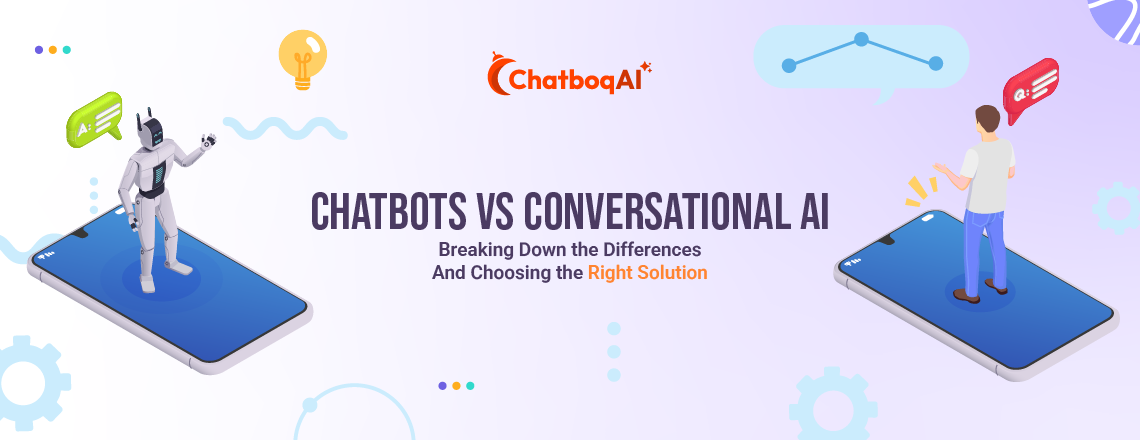
Chatbots vs Conversational AI: Breaking Down the Differences and Choosing the Right Solution
Chatbots vs Conversational AI comes down to complexity and capability. Chatbots are rule-based tools that follow predefined scripts to answer FAQs and handle repetitive tasks. Conversational AI, on the other hand, leverages NLP, machine learning, and deep learning to understand intent, learn from interactions, and deliver human-like responses.
📑 Table of Contents
- Chatbots vs Conversational AI: Breaking Down the Differences and Choosing the Right Solution
- Key Highlights:
- What is a Chatbot?
- What is Conversational AI?
- A side-by-side comparison of Chatbots vs Conversational AI
- How to choose the right solution between Chatbots and Conversational AI?
- When to use Conversational AI like Chatboq?
- Conclusion
- Frequently Asked Questions (FAQs)
For businesses, chatbots work best for simple, structured support, while conversational AI is the right choice for advanced, personalized engagement at scale.
Choosing the right tool between chatbots and conversational AI could be based on efficiency and engagement. For businesses, SaaS providers, and tech professionals aiming to automate communication with users, understanding these differences is crucial.
Key Highlights:
| Rule-based systems for basics. Intelligent, context-aware responses. Best for FAQs and simple tasks. Handles complex, multi-step queries. Lower upfront costs, quick setup. Learns and adapts over time. Blended use delivers the best results. |
What is a Chatbot?
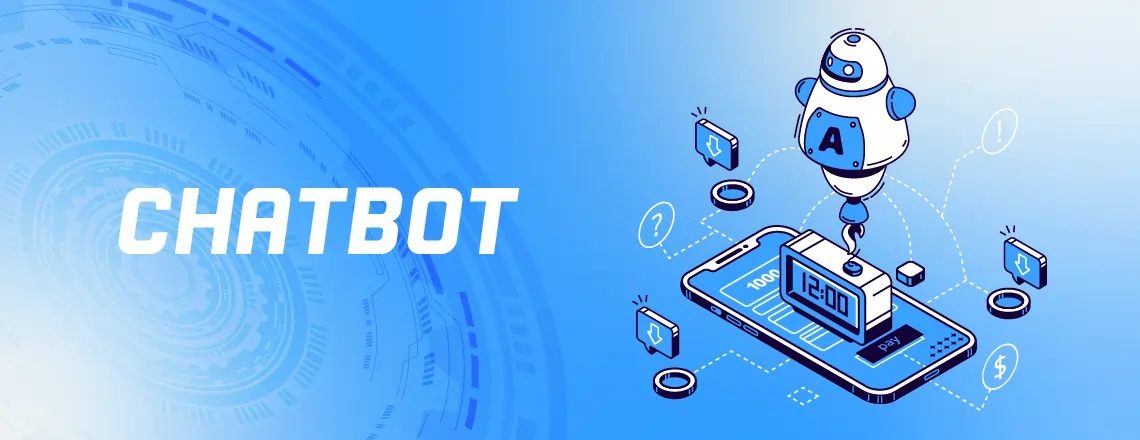
A chatbot is a software or program that interacts with humans based on preset rules and regulations. It is based on scripts and decision trees, and provides output for a specific keyword. Chatbots take text input or voice input for processing, and if the keyword matches preset data, the output is expected. Chatbot examples include virtual assistants, e-commerce bots, banking bots, and customer bots. These chatbots are used on various websites of different businesses, such as e-commerce, hospitals, banks, and tech companies.
What are the different types of Chatbots?
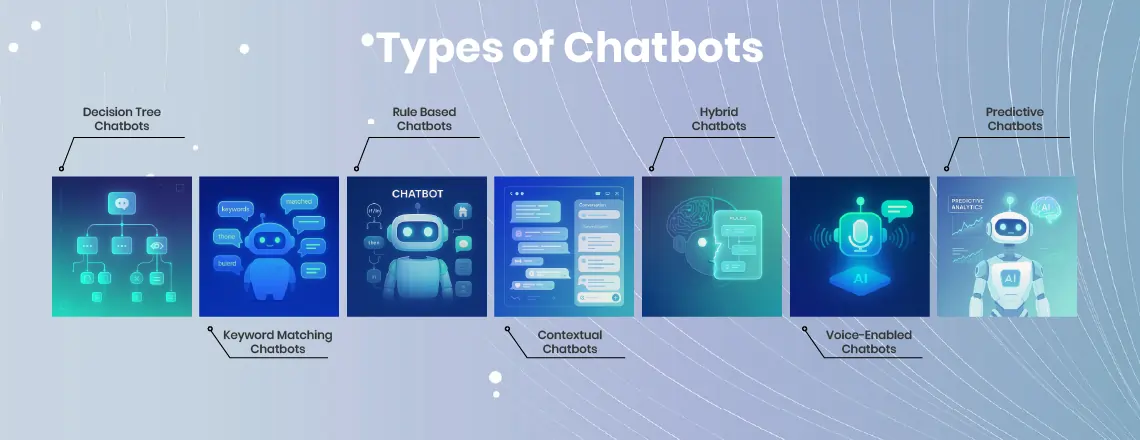
The different types of chatbots are as follows:
- Decision tree chabots
- Keyword-matching chatbots
- Rule-based chatbots
- Contextual chatbots
- Hybrid chatbots
- Voice-enabled chatbots
- Predictive chatbots
How do Chatbots work?
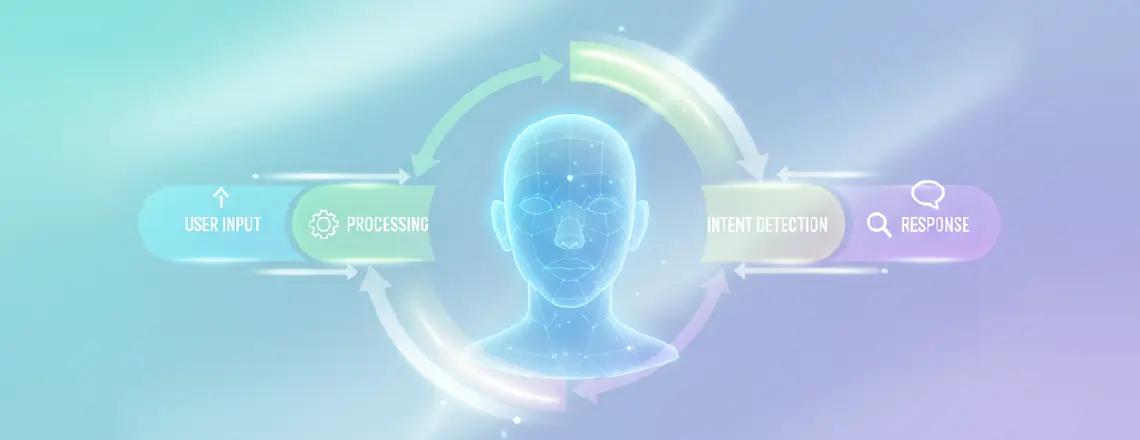
Chatbots are a preprogrammed set of rules and regulations that work on various bases. It has a different approach to interacting with the customer. For repetitive questions, frequently asked questions, and simple queries, chatbots are used. Chatbots are used to provide specific information about products, websites, and other relevant topics.
Chatbots work following these steps:
- Automation is used in various steps.
- Use simple logic, like if-else logic.
- Get input from the user.
- Process user input like text and voice
- Find out the intention, context, and sentiment of text.
- Provide a response that is contextually relevant or matches the keyword.
Customer experience with Chatbots

Customer experience refers to how customers feel about using chatbots. Some user experiences are listed below:
- Typical chatbots that only give product information.
- Conversation on a rigid path that is straightforward.
- Limited number of keyword matches or pre-programmed rules.
- Robotic tone is used if the user asks anything outside of the rules.
What are the benefits of Chatbots?
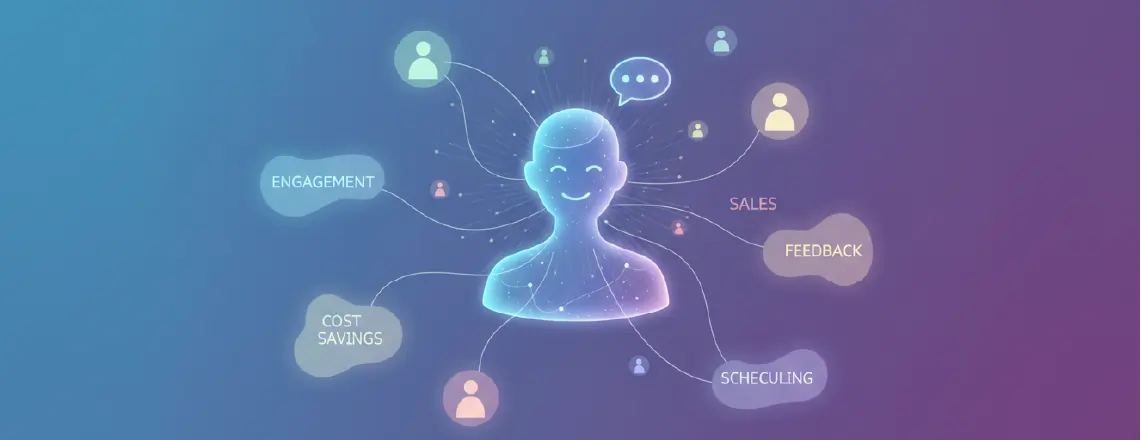
The benefits of chatbots are as follows:
- Boost customer engagement by providing real-time support and service anytime.
- Real-time support and service to customers.
- Collect feedback from customers and save visitor or user information.
- Saves operational cost by automating the FAQs.
- Improved lead generation and sales due to strong customer experience.
- Appointment Scheduling
What are the limitations of Chatbots?

Chatbots are software created by humans to simplify interactions and automate workflows. Chatbots also have limitations on various aspects, and some of them are listed below:
- Poor understanding of context due to a limited amount of information.
- Lack of empathy and human emotions.
- Inaccurate data and hallucinations due to a limit in memory.
- High maintenance costs and the need for an expert to develop and maintain the software.
- Scalability issue and not able to handle high traffic.
- Security and privacy concerns due to the information provided by the user.
- Cannot learn or adapt from previous interactions.
- Struggles with multiple conversations, context changes, and different languages.
What is Conversational AI?
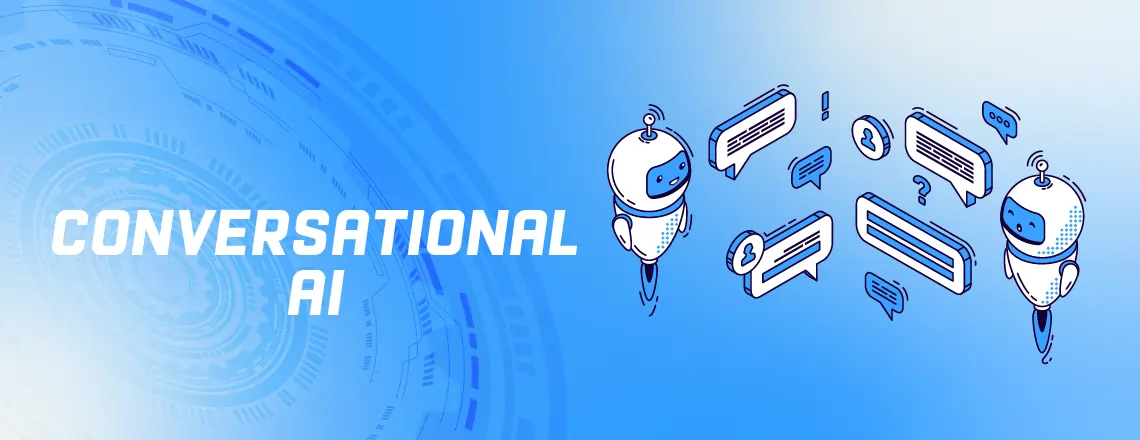
Conversational AI represents a significant advancement over rule-based chat or chatbots. Conversational AI combines artificial intelligence and technology, such as chatbots, to enhance its capabilities and provide instant support to customers. Conversational AI uses technologies like natural language processing, machine learning, and deep learning to make it more powerful and predictive. It understands the language, meaning, context, and intent of keywords and enables natural and human-like conversations. The computer understands the input text, processes it, learns from the process, and adapts to provide instant replies. There are many conversational AIs; some popular ones include Chatbot, Zendesk, Google Home, Amazon Alexa, and Siri.
How does Conversational AI work?
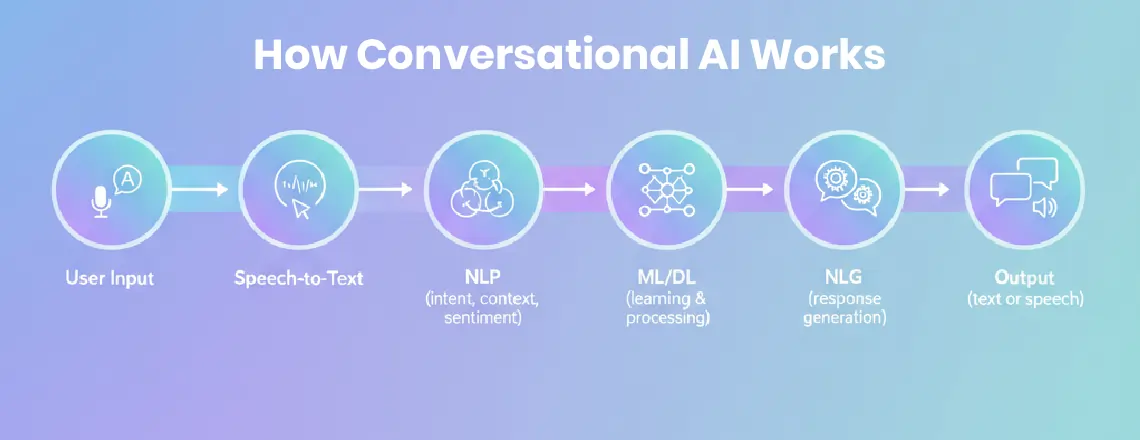
Conversational AI is the combination of various technologies like NLP, ML, NLG, and DL. These technologies enable conversational AI to work efficiently. Some of the steps of how conversational AI works are given below:
- Users provide input in the form of text or voice.
- The system takes the text or voice and provides it to natural language processing, which finds out the context, intent, and pattern of the sentence.
- A natural language generator produces a sentence, which machine learning then learns, processes, and adapts.
- Machine learning makes it simple and improves over time by learning from previous interactions.
- Maintain context and intent in various conversations, also.
- For voice input, the voice is converted to text by a voice-to-text converter, and then the steps are the same as above.
How does the Customer experience the conversational AI?
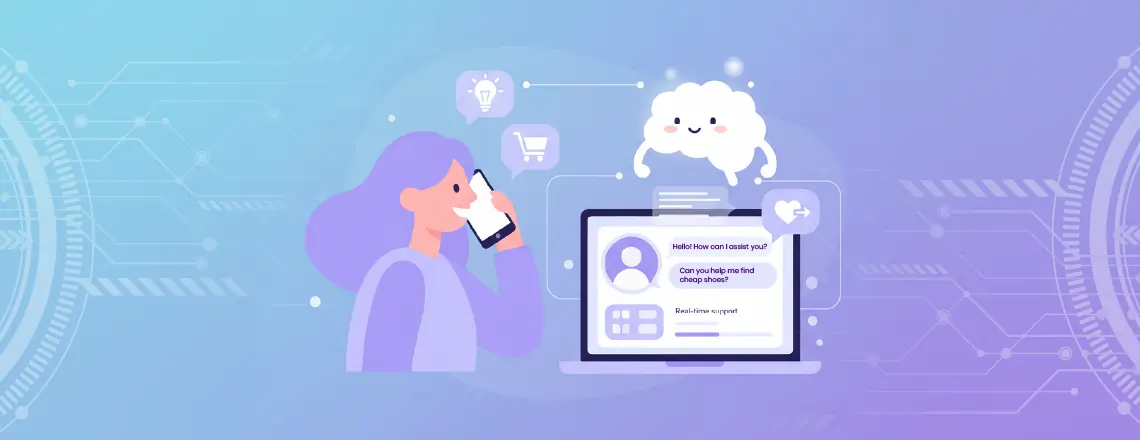
Customer experience depends on various factors, and some specific factors can make customers loyal and feel good. Rather than using the chatbots, customers are using conversational AI because of these points:
- Customers can feel like chatting with a human.
- Solve the complex inputs and provide their meanings.
- Suggest the tips, products, and more services.
- Personalized messaging and real-time support make a stronger relationship.
What are the benefits of using Conversational AI?
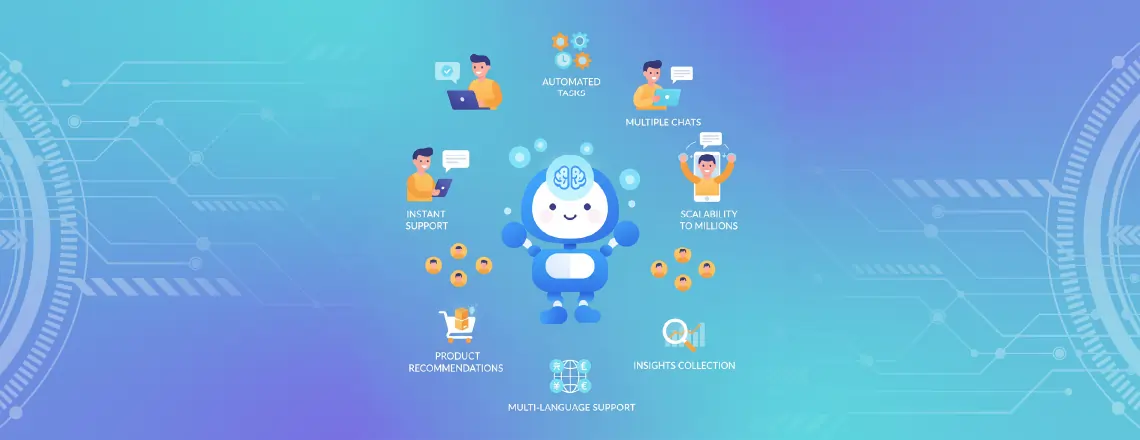
Conversational AI offers more benefits than Chatbots in several key areas, including prediction, data limitations, and memory. Some of the significant benefits of using conversational AI are listed below:
- Provides instant support and service that improves customer service.
- Automate repetitive tasks and FAQs to save human agents and reduce costs.
- Conversational AI can handle multiple chats simultaneously, thereby increasing operational efficiency.
- Scalable to any volume of data and users.
- Boost sales through recommendations and active support.
- Collect data and provide insights on different metrics.
- Conversational AI supports multiple languages and multiple communication platforms, making it a global and outstanding solution.
- Customer experience is improved with better support and increased loyalty towards the brand.
- Eliminates the waiting time for assistance and also facilitates the customer by voice commands and screen reader.
What are the features of Conversational AI?
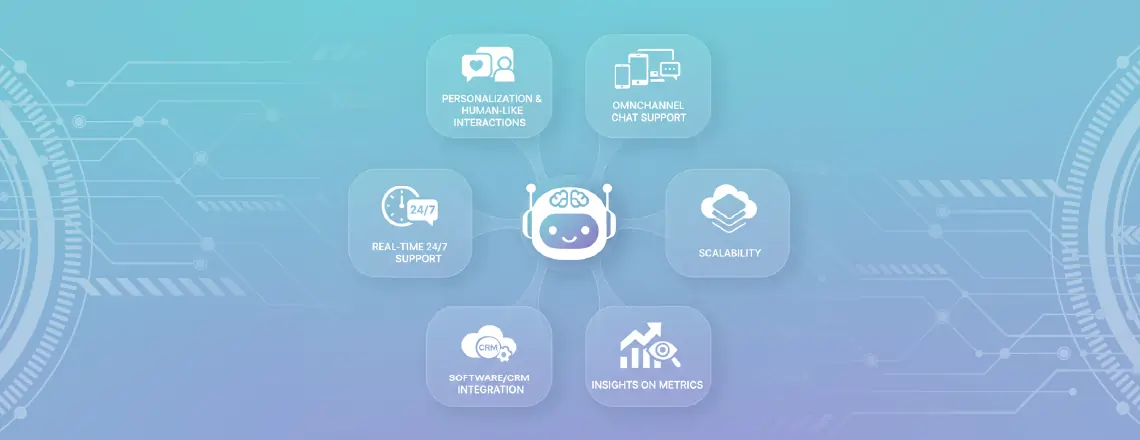
Conversational AI leverages core technologies such as natural language processing, Machine learning, Natural language understanding, and Automatic speech recognition to enhance its effectiveness for both businesses and users. Some of the key features of Conversational AI are described below:
- Personalization and human-like interactions:
Understand the input language and respond in a human-like manner. It also personalized the messages based on preference, past interactions, and behavior.
- Omnichannel chat support:
Conversational AI can communicate on various platforms and also has a shared inbox, which makes it omnichannel. It can divert traffic from any social media and other communication channels.
- Real-time support:
Provide instant replies and be available 24/7 to support customers, thereby improving accessibility for users.
- Scalability:
According to the business size, it can grow and support the customer. High volumes of data are managed efficiently by conversational AI.
- Ability to integrate:
Conversational AI has the capacity to integrate with other software and tools, like communication channels and CRM software. It includes SaaS software and other websites.
- Insights on Different Metrics:
Conversational AI tracks and records various customer and agent indicators to generate insights and reports. These reports can be useful for management teams to solve the issue and enhance the customer experience.
A side-by-side comparison of Chatbots vs Conversational AI
| Feature | Chatbots (Rule-Based) | Conversational AI (AI-Powered) |
| Technology | Rule-based, keyword-matching, decision trees | NLP, NLG, NLU, ML, deep learning |
| Interaction Style | Scripted, Rigid, linear, predictable | Dynamic, natural, context-aware |
| Contextual Memory | No memory; treats each input separately | Maintains conversation context and intent |
| Adaptability | Requires manual updates | Continuously learns and adapts with Machine learning |
| Sentiment Analysis | Absent and robotic tone | Detects tone, intent, and emotions with the use of AI |
| Integration | Basic integrations (knowledge base, simple tools) | Deep integrations with CRMs, ERPs, SaaS tools, and software |
| Multichannel Support | Mostly text-based, limited channels | Works across text, voice, mobile, and smart devices |
| Cost | Low upfront investment | Higher cost but scalable long-term benefits |
| Best Use Cases | FAQs, lead capture, appointment booking | Complex support, personalized engagement, automation |
Comparison between Chatbots and conversational AI
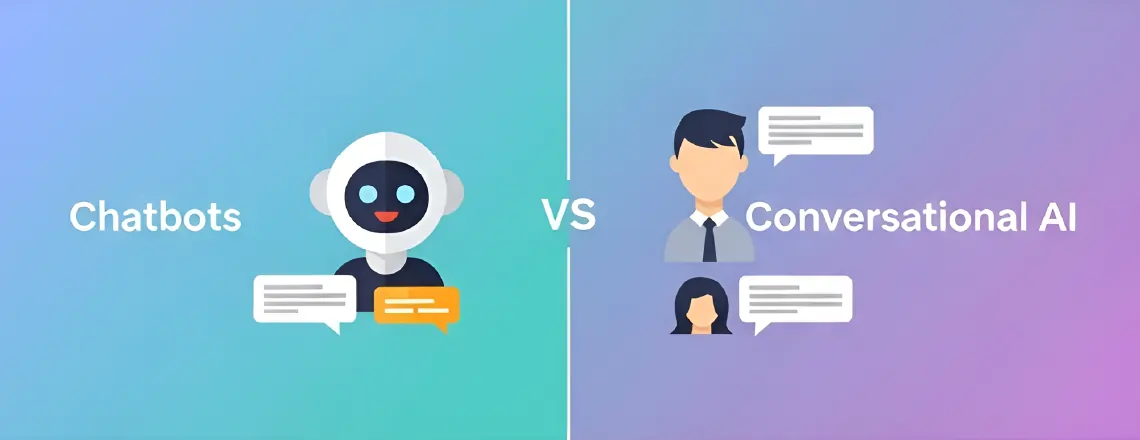
- Chatbots utilize rule-based decision trees and keyword matching technology, whereas conversational AI employs advanced technologies such as natural language processing, machine learning, and deep learning.
- The interaction style of chatbots is scripted, linear, and feels robotic, whereas conversational AI interacts in human-like language and context-aware style.
- Chatbots need manual updates, whereas Conversational AI continuously learns and adapts to the context and information.
- Chatbots are integrated on simple and basic tools or websites, whereas conversational AI integrates with CRM tools, SaaS software, and ERP, and also provides APIs.
- Chatbots cost less than conversational AI, which has a high initial cost.
- Chatbots’ best use cases are booking appointments, capturing leads, and FAQs, whereas Conversational AI has the benefits of supporting complex issues, personalized messages, and automation for various workflows.
How to choose the right solution between Chatbots and Conversational AI?
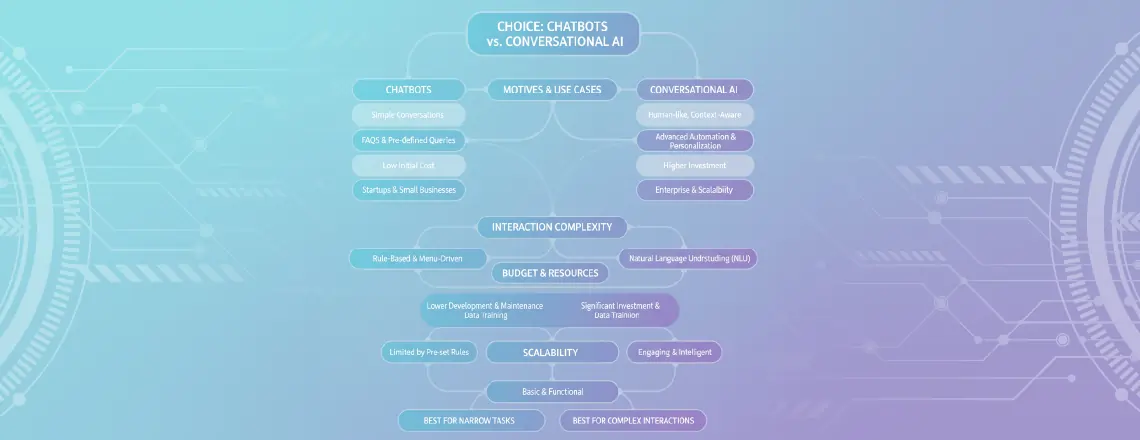
Choosing the best solution is always crucial for businesses, and it depends on the budget, business goals, and complexity. Follow these steps to select the right solution:
- Find out the motives and use cases:
- To provide support for repetitive questions at a lower cost, consider using chatbots.
- To provide human-like and personalized interactions, use conversational AI.
- Based on interaction complexity:
- Use chatbots for simple conversations.
- Use conversational AI for context-based conversations and multistep chats.
- According to budgets and resources:
- For small and startup businesses, chatbots can be implemented at a low cost and with limited resources.
- For large enterprises and businesses, implementing conversational AI with high investment can yield a long-term return.
- Based on scalability:
- For businesses looking to automate chats and workflows, consider using chatbots.
- Growing businesses and enterprise-level companies can use conversational AI, which involves Automation with AI.
- Use experience:
- For basic tasks like FAQs, use chatbots.
- For dynamic needs, such as product recommendations, sentiment analysis, and behavior tracking, use conversational AI.
When to use Conversational AI like Chatboq?
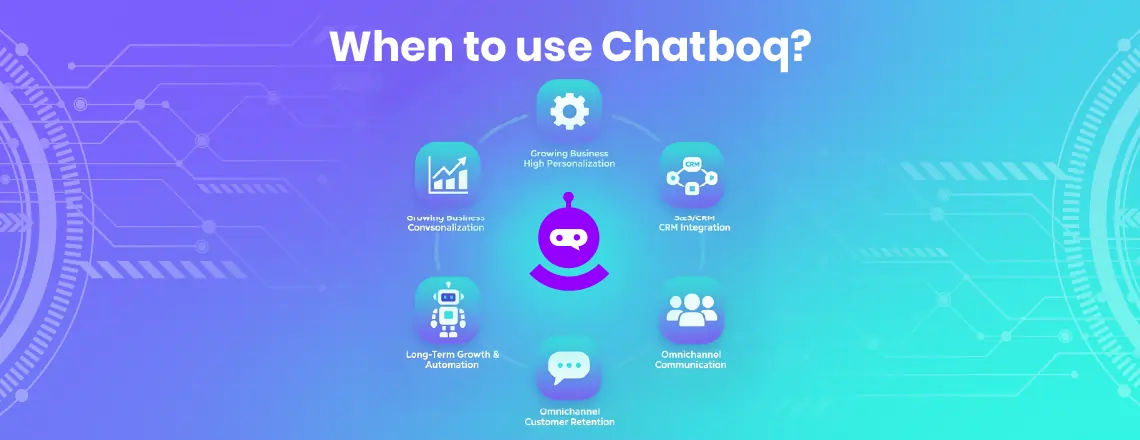
Using conversational AI tools like chatboq has specific times and reasons. Use chatbqoq in these situations:
- If you are a growing business or brand.
- High priority of personalization and customer experience.
- For integrating with complex systems, such as SaaS tools and CRM tools.
- If you are focusing on long-term growth and automation.
- For growing traffic and omnichannel communication, you can use chatboq.
Among both chatbot and conversational AI, most of the businesses use both technologies, which is called a hybrid approach. The hybrid approach has these rules:
- Chatbots are used only for handling simple and repetitive tasks.
- Conversational AI is used for handling complex and ambiguous inquiries, and it requires more attention.
Conclusion
The question of chatbots vs conversational AI is not about which is better, but which fits your business needs. Chatbots are cost-effective, quick to deploy, and ideal for repetitive tasks. Conversational AI is intelligent, context-aware, and scalable for complex queries. The future lies in blending both, using chatbots for simple tasks and AI for advanced interactions to deliver flexible, efficient, and engaging customer experiences.
Choose wisely before making any decision, act smart, and provide effective service and support.


Leave A Comment